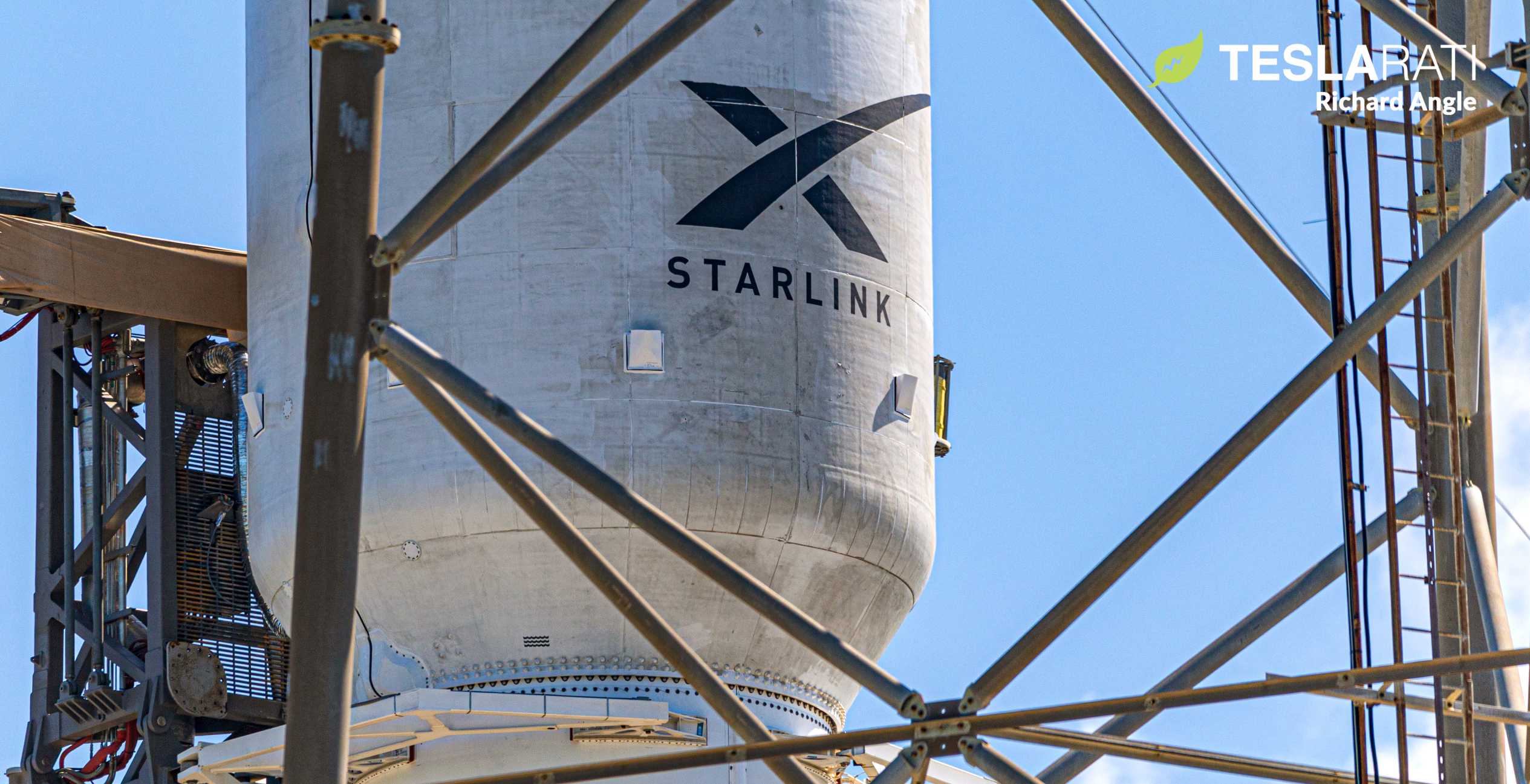
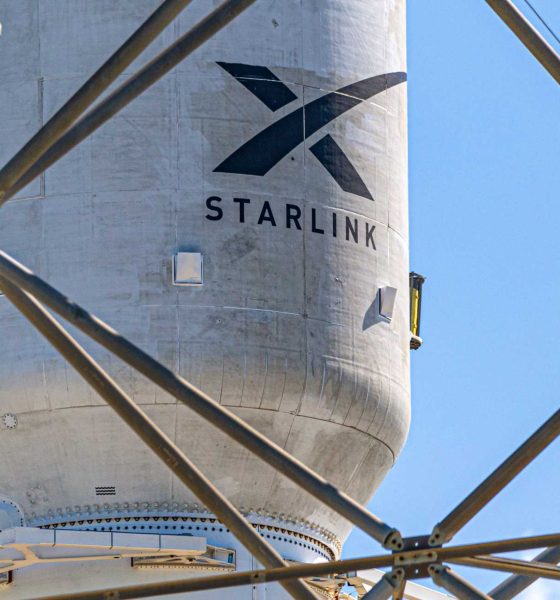
News
SpaceX Starlink user terminals tested by board members as beta nears
SpaceX’s nascent Starlink user terminal technology – the consumer hardware that will connect customers to a vast space-based internet constellation – is being put through its paces in a series of closed tests with employees, board members, and investors.
This news comes around the same time as SpaceX took two significant steps towards a beta debut for Starlink internet service, completing the eighth successful launch of Starlink v1.0 satellites and opening a new web portal where anyone can sign up for updates on service availability in their region. According to COO and President Gwynne Shotwell, SpaceX means to begin rolling out Starlink internet service once 14 launches are completed and ~840 satellites are in orbit. Whether or not that figure includes SpaceX’s first launch of 60 ‘v0.9’ Starlink satellites back in May 2019, it’s safe to say that that 14-launch milestone is just two or three months away if the company can sustain and average of two to three launches per month.
Regardless of the spectacular, well-publicized launch component of SpaceX’s Starlink internet satellite constellation, apparent user terminal testing helps shed light on the customer-facing side of the venture. While currently just shy of invisible, the user terminal is at least as difficult and important a problem to solve as Starlink satellite production and launch – if not more important and more challenging.
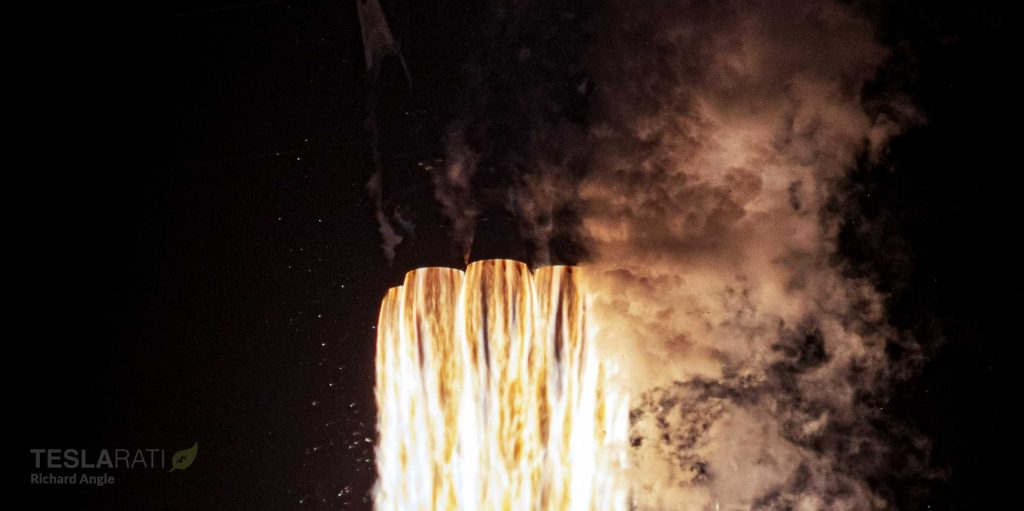
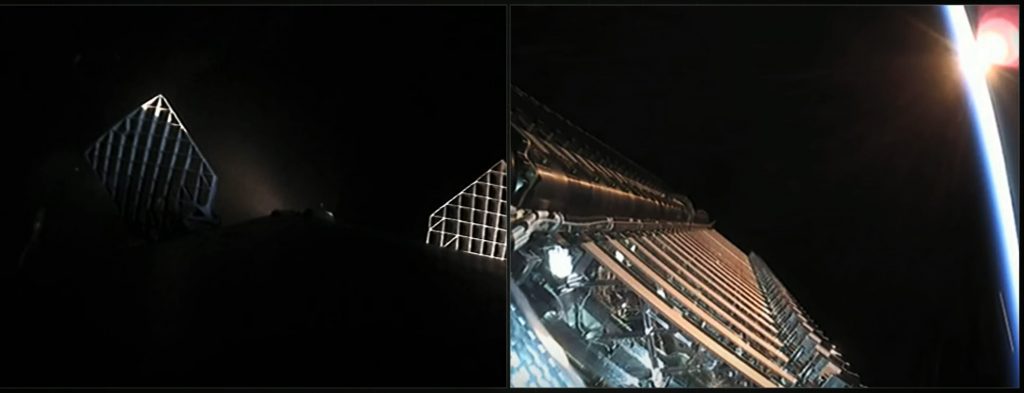
As previously discussed on Teslarati, user terminals could easily make or break Starlink regardless of dozens of successful launches or the quality of satellites, ground stations, or the network in general.
“Aside from the quality, reliability, and usability of the network itself (can it stream YouTube/Netflix videos? Game? Teleconference?), the user terminals customers need in order to access said network will also be under the microscope. If SpaceX is unable to mass-produce millions of high-quality, reliable user terminals and ensure that they are easy and intuitive to use, the quality of the Starlink satellite network itself would be effectively irrelevant.
The problem is familiar for users of ISPs (i.e. a majority of humans): your WiFi router and modem can be top-of-the-line but bad internet service makes the quality of your home network irrelevant. Vice-versa, a bad router or modem will also make high-quality internet service effectively irrelevant. In other words, SpaceX fundamentally needs to ensure that neither component threatens the user experience.”
Teslarati.com – April 23rd, 2020
In other words, low-quality, buggy user terminals that are hard to set up or require frequent babysitting to ensure a stable connection would make the quality of the satellites SpaceX launches and the ground-based infrastructure it installs irrelevant. Hence the closed focus group-style testing like that described above by investor Steve Jurvetson.

According to Jurvetson, board members (him included) were invited to SpaceX on June 11th or 12th to try out Starlink user terminal prototypes the company is in the midst of developing. Specifically, each board member was given a terminal and asked to set it up themselves in a friendly race to the finish line (establishing an internet connection). Steve ultimately said that the prototype he set up offered the “simplest out-of-box experience imaginable.”
In fact, SpaceX has already been performing similar tests for several months according to a virtual seminar hosted by data company Tape Ark earlier this month, performing a similar setup test but with dozens of employees’ spouses rather than board members. While board members of a high-tech rocket company and families of its employees aren’t exactly a random sample of American (or worldwide) consumers, all non-employees tested thus far have been able to set up Starlink terminals and establish an internet connection without issue. That’s no mean feat when one considers that the alternative is setting up a modem and router and activating internet service through an ISP like Comcast, a task that can easily destroy the sanity of even technically-savvy users.
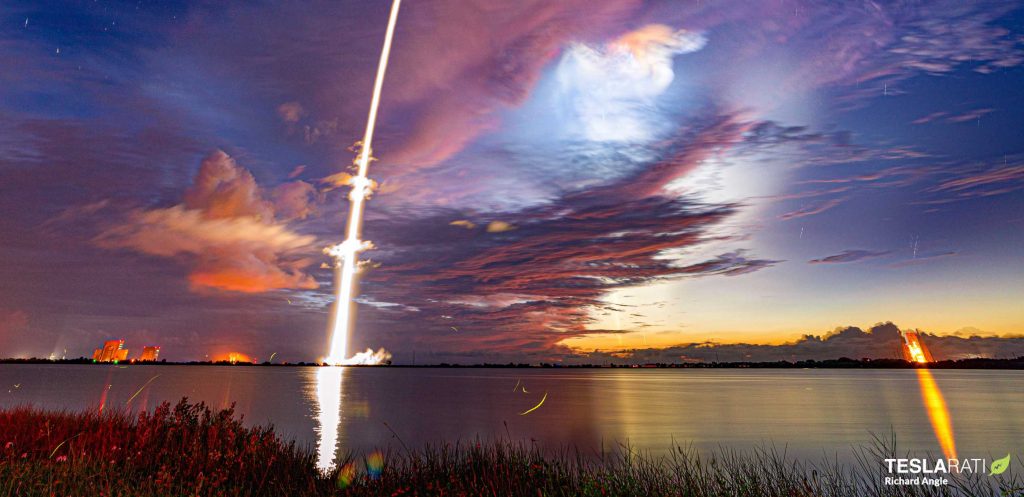
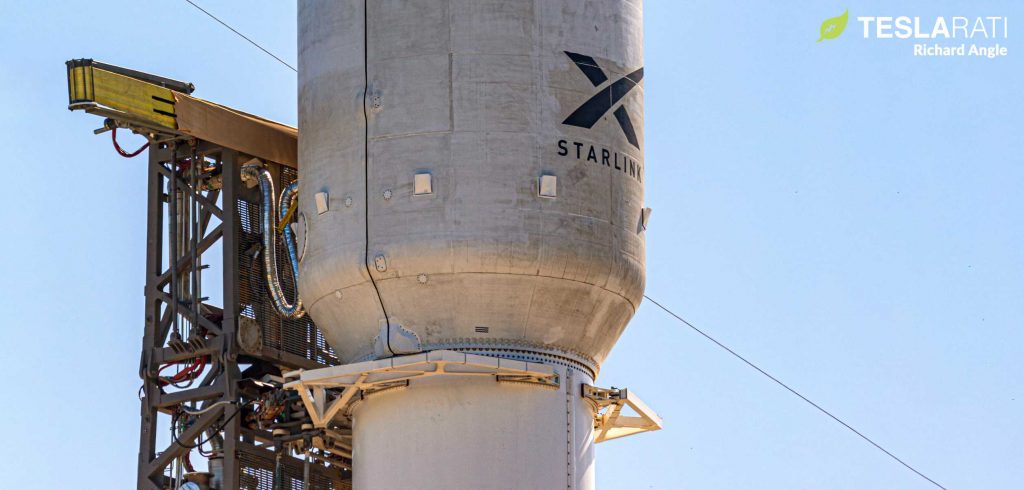
CEO Elon Musk himself has always made it clear that simplicity is a priority for Starlink user terminals, recently stating that the final product should be even simpler than the prototypes that board and family members alike had zero difficulty setting up, requiring customers to simply “plug [it] in & point [it] at [the] sky”. Given that SpaceX could be ready to roll out Starlink internet service in some capacity as early as August or September, it’s safe to say that the mysterious “UFO-on-a-stick” user terminal wont remain a secret for much longer.
Specs-wise, the same virtual seminar revealed that a normal level of connectivity for a user terminal will be around 100 megabits per second (mbps) down and 40 mbps up. According to Musk, Starlink internet latency (often known as ping) might actually be better than fiber internet, offering ~20 ms for Version 1 and ~8 ms when Version 2 debuts (ETA unknown).
Check out Teslarati’s Marketplace! We offer Tesla accessories, including for the Tesla Cybertruck and Tesla Model 3.

News
Tesla hints at Starlink integration with recent patent
“By employing polymer blends, some examples enable RF transmission from all the modules to satellites and other communication devices both inside and outside the vehicle.”

Tesla hinted at a potential Starlink internet terminal integration within its vehicles in a recent patent, which describes a vehicle roof assembly with integrated radio frequency (RF) transparency.
The patent, which is Pub. No U.S. 2025/0368267 describes a new vehicle roof that is made of RF-transparent polymer materials, allowing and “facilitating clear communication with external devices and satellites.”
Tesla believes that a new vehicle roof design, comprised of different materials than the standard metallic or glass elements used in cars today, would allow the company to integrate modern vehicular technologies, “particularly those requiring radio frequency transmission and reception.
Tesla has recently filed a US patent application on integrating RF transparent materials into the roof structure.
“facilitating clear communication with external devices and satellites”
Tesla fleet is getting @Starlink connectivity integration soon. LFG @Tesla @elonmusk… pic.twitter.com/bLa8YtPLd1
— Chansoo Byeon (@Chansoo) December 9, 2025
Instead of glass or metallic materials, Tesla says vehicles may benefit from high-strength polymer blends, such as Polycarbonate, Acrylonitrile Butadiene Styrene, or Acrylonitrile Styrene Acrylate.
These materials still provide ideal strength metrics for crashworthiness, stiffness for noise, vibration, and harshness control, and are compliant with head impact regulations.
They would also enable better performance with modern technologies, like internet terminals, which need an uninterrupted signal to satellites for maximum reception. Tesla writes in the patent:
“By employing polymer blends, some examples enable RF transmission from all the modules to satellites and other communication devices both inside and outside the vehicle.”

One of the challenges Tesla seems to be aware of with this type of roof design is the fact that it will still have to enable safety and keep that at the forefront of the design. As you can see in the illustration above, Tesla plans to use four layers to increase safety and rigidity, while also combating noise and vibration.
It notes in the patent that disclosed examples still meet the safety requirements outlined in the Federal Motor Vehicle Safety Standards (FMVSS).
Starlink integrated directly into Tesla vehicles would be a considerable advantage for owners. It would come with a handful of distinct advantages.
Initially, the inclusion of Starlink would completely eliminate cellular dead zones, something that is an issue, especially in rural areas. Starlink would provide connectivity in these remote regions and would ensure uninterrupted service during road trips and off-grid adventures.
It could also be a critical addition for Robotaxi, as it is crucial to have solid and reliable connectivity for remote monitoring and fleet management.
Starlink’s growing constellation, thanks to SpaceX’s routine and frequent launch schedule, will provide secure, stable, and reliable internet connectivity for Tesla vehicles.
Although many owners have already mounted Starlink Mini dishes under their glass roofs for a similar experience, it may be integrated directly into Teslas in the coming years, either as an upgrade or a standard feature.
News
Tesla supplements Holiday Update by sneaking in new Full Self-Driving version
It seems Tesla was waiting for the Hardware 4 rollout, as it wanted to also deploy a new Full Self-Driving version to those owners, as it appeared in the release notes for the Holiday Update last night.

Tesla has surprised some owners by sneaking in a new Full Self-Driving version with the wide release of the Holiday Update, which started rolling out to Hardware 4 owners on Friday night.
Tesla has issued a controlled and very slow release pattern with the Holiday Update, which rolls out with Software Version 2025.44.25.5.
For the past two weeks, as it has rolled out to Hardware 3 and older Tesla owners, the company has kept its deployment of the new Software Version relatively controlled.
It seems Tesla was waiting for the Hardware 4 rollout, as it wanted to also deploy a new Full Self-Driving version to those owners, as it appeared in the release notes for the Holiday Update last night.
Tesla Full Self-Driving v14.2.1.25 made its first appearance last night to Hardware 4 owners who are members of the Early Access Program (EAP). It appears to be a slight refinement from FSD v14.2.1, which has been out for a couple of weeks.
Tesla v2025.44.25.5 Holiday update incoming
Also Full Self-Driving v14.2.1.25!!! pic.twitter.com/74D7S0UGXz
— TESLARATI (@Teslarati) December 13, 2025
Many owners welcome the new FSD version, us included, because we’ve been less than impressed with v14.2.1. We have experienced some minor regressions with v14.2.1, especially with Speed Limit recognition, Speed Profile tinkering, and parking performance.
As it stands, Full Self-Driving is still particularly impressive, but Tesla is evidently having an issue with some of the adjustments, as it is still refining some of the performance aspects of the suite. This is expected and normal with some updates, as not all of them are an improvement in all areas; we routinely see some things backtrack every once in a while.
This new FSD version is likely to take care of those things, but it also includes all of the awesome Holiday Update features, which include:
- Grok with Navigation Commands (Beta) – Grok will now add and edit destinations.
- Tesla Photobooth – Take pictures inside your car using the cabin-facing camera
- Dog Mode Live Activity – Check on your four-legged friend on your phone through periodic snapshots taken of the cabin
- Dashcam Viewer Update – Includes new metrics, like steering wheel angle, speed, and more
- Santa Mode – New graphics, trees, and a lock chime
- Light Show Update – Addition of Jingle Rush light show
- Custom Wraps and License Plates – Colorizer now allows you to customize your vehicle even further, with custom patterns, license plates, and tint
- Navigation Improvements – Easier layout and setup
- Supercharger Site Map – Starting at 18 pilot locations, a 3D view of the Supercharger you’re visiting will be available
- Automatic Carpool Lane Routing – Navigation will utilize carpool lanes if enabled
- Phone Left Behind Chime – Your car will now tell you if you left a phone inside
- Charge Limit Per Location – Set a charge limit for each location
- ISS Docking Simulator – New game
- Additional Improvements – Turn off wireless charging pad, Spotify improvements, Rainbow Rave Cave, Lock Sound TRON addition
Tesla also added two other things that were undocumented, like Charging Passport and information on USB drive storage to help with Dashcam.
Cybertruck
Tesla updates Cybertruck owners about key Powershare feature

Tesla is updating Cybertruck owners on its timeline of a massive feature that has yet to ship: Powershare with Powerwall.
Powershare is a bidirectional charging feature exclusive to Cybertruck, which allows the vehicle’s battery to act as a portable power source for homes, appliances, tools, other EVs, and more. It was announced in late 2023 as part of Tesla’s push into vehicle-to-everything energy sharing, and acting as a giant portable charger is the main advantage, as it can provide backup power during outages.
Cybertruck’s Powershare system supports both vehicle-to-load (V2L) and vehicle-to-home (V2H), making it flexible and well-rounded for a variety of applications.
However, even though the feature was promised with Cybertruck, it has yet to be shipped to vehicles. Tesla communicated with owners through email recently regarding Powershare with Powerwall, which essentially has the pickup act as an extended battery.
Powerwall discharge would be prioritized before tapping into the truck’s larger pack.
However, Tesla is still working on getting the feature out to owners, an email said:
“We’re writing to let you know that the Powershare with Powerwall feature is still in development and is now scheduled for release in mid-2026.
This new release date gives us additional time to design and test this feature, ensuring its ability to communicate and optimize energy sharing between your vehicle and many configurations and generations of Powerwall. We are also using this time to develop additional Powershare features that will help us continue to accelerate the world’s transition to sustainable energy.”
Owners have expressed some real disappointment in Tesla’s continuous delays in releasing the feature, as it was expected to be released by late 2024, but now has been pushed back several times to mid-2026, according to the email.
Foundation Series Cybertruck buyers paid extra, expecting the feature to be rolled out with their vehicle upon pickup.
Cybertruck’s Lead Engineer, Wes Morrill, even commented on the holdup:
As a Cybertruck owner who also has Powerwall, I empathize with the disappointed comments.
To their credit, the team has delivered powershare functionality to Cybertruck customers who otherwise have no backup with development of the powershare gateway. As well as those with solar…
— Wes (@wmorrill3) December 12, 2025
He said that “it turned out to be much harder than anticipated to make powershare work seamlessly with existing Powerwalls through existing wall connectors. Two grid-forming devices need to negotiate who will form and who will follow, depending on the state of charge of each, and they need to do this without a network and through multiple generations of hardware, and test and validate this process through rigorous certifications to ensure grid safety.”
It’s nice to see the transparency, but it is justified for some Cybertruck owners to feel like they’ve been bait-and-switched.








